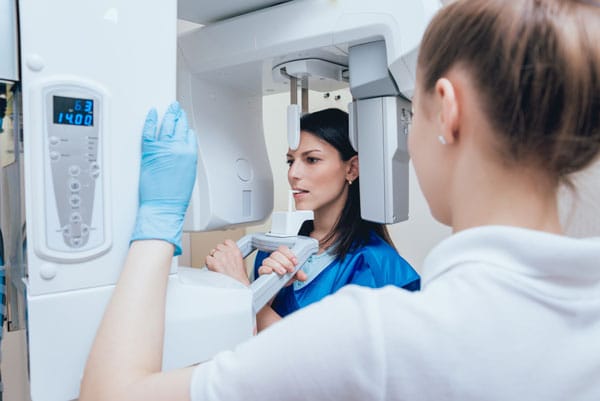Digital X-Rays
Many of us have been to the dentist recently enough to remember how uncomfortable it is to get dental x-rays taken. Biting down on a sharp piece of x-ray film, while the dentist triggered the machine from behind a lead shield, used to be an unavoidable part of dental care.
However, new technologies have developed which can eliminate this type of discomfort, as well as providing better-quality images. Dental digital x-rays are a product of these technological advances.
With these, the x-ray film is replaced with an electronic sensor which emits a small amount of x-rays into the part of the mouth it is pointed at, and relays information back to a computer screen, where both dentist and patient can clearly see how the patient’s teeth are doing.
So What Are The Benefits?

Digital x-rays are computer generated images. These images require up to 90% less radiation than with conventional film type x-rays. Instead of using the traditional silver-oxide x-ray film that must be developed and then fixed in caustic and environmentally damaging solutions, the new system takes pictures via a small electronic sensor and it then instantaneously transmits a picture of the tooth onto the video monitor in the treatment room. Therefore, we can see your teeth and surrounding structures immediately.
Not only does the new digital x-ray eliminate the usual wait for x-ray film to be processed, but it also is highly sensitive, so that patients are exposed to even less radiation than with conventional x-rays.
There are numerous advantages of dental digital x-rays, as opposed to traditional dental x-rays.
First of all, anything that reduces the discomfort experienced in the dental chair is welcomed, and these newer x-rays do just that. Also, there is no need to wait for the x-ray film to be developed before it can be viewed, meaning the checkup as a whole takes less time. The image brought up on the computer screen is also clearer, in part because the sensor used to make dental digital x-rays is much more sensitive than x-ray film. Because it is more sensitive, the patient’s x-ray exposure can also be dramatically reduced. Also, the sensor pads that we place in your mouth that record the images to the computer are extremely flexible and comfortable to you the patient. Inside each sensor is the equivalent of a digital camera that is sensitive to x-rays.
One of the most significant features of dental digital x-rays is that, with the proper additional software, dentists can use a technique known as subtractive radiography. This means that new x-ray images can be compared with older ones from the same patient. This comparison is performed digitally, by the computer, meaning that it will sometimes catch differences that would escape detection in a visual comparison. The patient is the one who benefits most from this because potential problems can often be seen and caught earlier by this method than they would have been.
If you desire to take care of your families dental health then contact us today at (403) 257-1180!

Whether it's a dental emergency in South Calgary or just a regular checkup or cleaning, McKenzie Towne Dental wants to make your experience as comfortable and convenient as possible. Serving McKenzie Towne, Cranston, Auburn Bay, Seton, Copperfield, New Brighton, Mahogany, Inverness, and all of Southeast Calgary
© Copyright 2025 McKenzie Towne Family Dental and Dental Growth Strategies | All Rights Reserved | Powered by Dental Growth Strategies | Disclaimer: Dr. Safi Magharius is a general dentist, not a cosmetic dental specialist. Cosmetic dentistry is not a term/specialty recognized by the Alberta Dental Association & College (ADA&C). Dr. Magharius provides cosmetic dental procedures such as porcelain veneers, dental implant crowns, dental bonding, and teeth whitening as part of his general dentist license.